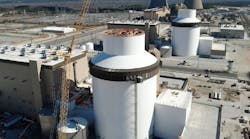A few years ago I went to a music workshop in Arizona and met a man that I had known only through his recordings and other publications. During our conversations and playing together I found out that he had studied Government Affairs at Georgetown University. So how did he end up teaching old-time clawhammer banjo and fiddle and performing around the U.S.? He said that after getting his degrees he finally came to the conclusion, shared by a number of his professors, that the role of government structure isn’t primarily to get anything done.
Oh sure, if a bureaucrat or political leader actually accomplishes something worthwhile it probably won’t be held against them. But, paraphrasing his words, the real value of government is to move slowly enough to act as a brake, a damper, so that things don’t happen too fast and get out of control.
My friend didn’t want to be a brake pad, so he went on to thrive in what he considered a much better life as a musician.
Well, I had to admit that if a big part of the government’s mission is to slow things down then it’s been doing a great job for as long as I can remember.
Big companies often mirror big government. Often the semi-permeable layers of middle management and their administrative staffs, armed with standard practices and forms, provide mostly stability and continuity. Corporate innovators, particularly as those in R&D departments know, often have to ‘hide’ what they’re doing until their project shows sufficient promise to bring it out in the open. Otherwise, unless they find an unusual executive sponsor, it will be still-born.
The phenomenon of striving to keep the “steady state” has been a hallmark of electric utilities. That’s what the regulators have historically wanted. In fact, the Public Utility Holding Company Act of 1935, the legislation that defined the industry structure, was passed primarily to limit the territories and free market pricing of early competing companies.
But the insistence on constancy is the enemy of innovation. That was sort of okay because we didn’t really need to be particularly innovative in technology. Our regulators were happy (and even made sure) that we didn’t get too imaginative in our business practices. Our technology cycles were slow, governed by standards organizations and meetings. Our business cycles were glacial, at best no faster than our multiple year rate case cycles.
That all started to change about 20 years ago. As the bandied-about ideals of utility deregulation began to attract new entrants to the electric utility business, utilities, for the first time, were negotiating and frequently competing with organizations that had fast decision processes (remember ENRON?). We were dealing with independent generators and aggregators, both of which could move fast in business and technology.
It was like holding a high-school sock hop at a retirement village. The new entrants just out-danced us. Our first response was a “me too” reaction. Utilities (where the regulators allowed) thought we could be competitive by firing up an unregulated arm that offered new services and products. Unfortunately we often stocked the new pond with members of the semi-permeable middle-management from the parent company. That didn’t work out too well.
In the last decade there has been a revolution in utility technology. We have the beginnings of smart grid infrastructure. Smart metering, cheap solar PV, offshore wind turbines…But the power industry is not getting much credit for those innovations because they were brought about mostly through government policy and subsidies and innovation by private enterprise.
Instead, we’re being told that energy production and use is the main cause of climate change and potential destruction of the earth!
Whether that’s true or not, I don’t know. But I know that between 2004 and 2009 the U.S. installed less than 30 GW of wind turbines. During the same time, China added 300 GW of coal-fired central plants. So, however fossil fuel emissions affect climate change, I can’t see how the U.S., doing its best, can prevent atmospheric CO2 concentrations reaching 450 ppm, well beyond the well-publicized “no turning back” level.
And it’s not just some outspoken climatologists that are making noise. Now the public is beginning to sweat (forgive me) because the weather has been strange this last year. Climate change is all the rage in the media and blogosphere and the electric power industry is coming under tremendous pressure to innovate in both business practice and in technology in order to help the planet.
Sure, there are indications that we don’t really understand what’s going on and that our climate models are drastically inaccurate. (The lack of any warming over the last 16 years being hard to explain.) But, even if climate change issues should go away, the spotlight has been turned on our industry and it’s not going away. At the same time power engineers and technologists with experience are getting rare. You and your peers are becoming more valuable as ever before, my friend! (Tell that to your boss at your next performance review!)
So what’s the point?
My musician friend is sure that he’s happier living in the desert than he would have been commuting from the burbs in Virginia to the D.C. Beltway just to play the part of a brake pad. To mix metaphors, if you want to be a hammer in an industry where you’ve mostly been a nail, now’s your chance.

